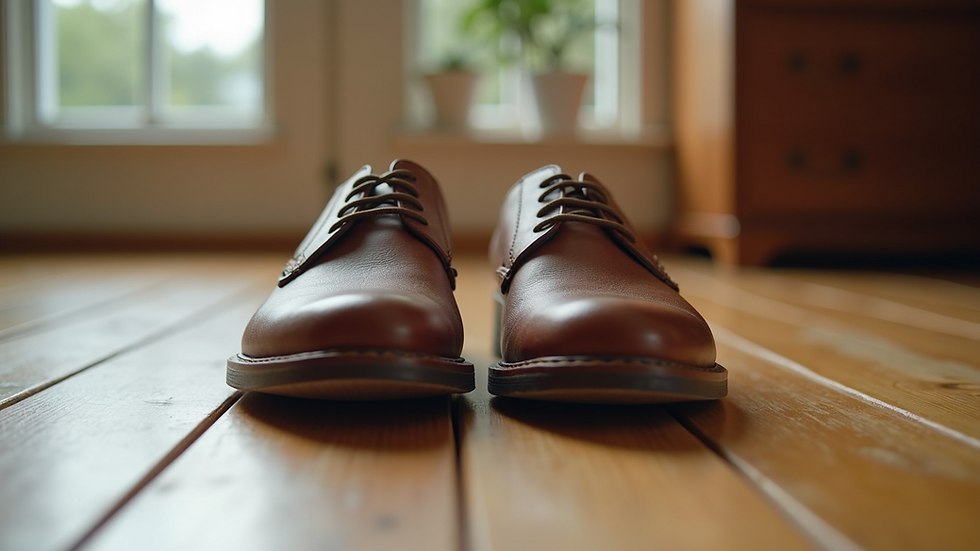Comfortable Solutions for Corn and Callus Removal
- Rob Talbot

- Oct 6
- 3 min read
Foot discomfort caused by calluses and corns is a common problem that affects many people. These thickened areas of skin develop due to repeated pressure or friction, often making walking painful and uncomfortable. Fortunately, there are several comfortable and effective solutions to manage and remove these foot issues. This article explores practical methods and tips to help you maintain healthy, pain-free feet.
Understanding and Removing Foot Calluses Safely
Calluses are thickened patches of skin that form as a protective response to pressure or friction. They usually appear on the soles of the feet or the sides of toes. While calluses are generally not harmful, they can become painful if they grow too thick or crack.
To safely remove foot calluses, consider the following steps:
Soak your feet in warm, soapy water for 10-15 minutes to soften the skin.
Gently exfoliate the callused area using a pumice stone or foot file. Avoid aggressive scrubbing to prevent skin damage.
Apply moisturiser regularly to keep the skin soft and prevent callus formation.
Wear comfortable shoes that fit well and provide adequate cushioning to reduce pressure points.
For persistent or painful calluses, it is advisable to consult a podiatrist who can offer professional treatment options.

Effective Tips for Removing Foot Calluses at Home
Removing foot calluses at home can be straightforward if done carefully. Here are some practical tips to help you manage calluses comfortably:
Use over-the-counter pads: Specially designed corn and callus pads can cushion the affected area and reduce friction. We do not recommend the use of corn plasters containing acid products as they can actually compound the problem.
Avoid sharp tools: Never use razors or knives to cut calluses, as this can lead to infection.
Keep feet dry and clean: Moist environments encourage skin problems, so dry your feet thoroughly after washing.
Choose breathable footwear: Shoes made from natural materials allow air circulation, reducing sweat and friction.
Consider foot soaks with Epsom salts: This can help soften the skin and relieve discomfort.
If home remedies do not improve your condition, professional advice is recommended.

Can I Dig a Corn Out of My Foot?
It is important to understand that digging a corn out of your foot is not a safe or recommended practice. Corns are hardened layers of skin that develop due to pressure, and attempting to remove them by digging can cause injury, infection, and worsen the problem.
Instead, consider these safer alternatives:
Use corn pads to relieve pressure.
Soak your feet to soften the corn before gently filing it down.
We do not recommend that you apply salicylic acid treatments designed to dissolve the thickened skin gradually. They can actually make the problem worse.
Seek professional care if the corn is painful or persistent.
Professional podiatrists have the right tools and expertise to remove corns safely without causing harm.

When to Seek Professional Help for Corn and Callus Removal
While many calluses and corns can be managed at home, certain situations require professional intervention:
If the callus or corn is painful or bleeding.
If you have diabetes or poor circulation, which increases the risk of complications.
If home treatments have not improved the condition after several weeks.
If the affected area shows signs of infection, such as redness, swelling, or pus.
A podiatrist can provide treatments such as professional debridement, custom orthotics, or advice on footwear modifications. They can also address underlying causes to prevent recurrence.
For more detailed information on corn and callus removal, visiting a specialist website can be very helpful.
Maintaining Healthy Feet to Prevent Calluses and Corns
Prevention is key to avoiding the discomfort of calluses and corns. Here are some practical tips to keep your feet healthy:
Wear well-fitting shoes that provide support and cushioning.
Use protective pads or insoles if you have areas prone to pressure.
Keep your feet clean and moisturised daily.
Trim toenails properly to avoid pressure on toes.
Change socks regularly to keep feet dry and reduce friction.
Regular foot care routines and attention to footwear can significantly reduce the risk of developing calluses and corns.
Taking care of your feet with comfortable and effective solutions can make a big difference in your daily comfort. Whether you choose home remedies or professional care, understanding the best practices for removing foot calluses and corns will help you maintain healthy, pain-free feet.




Comments